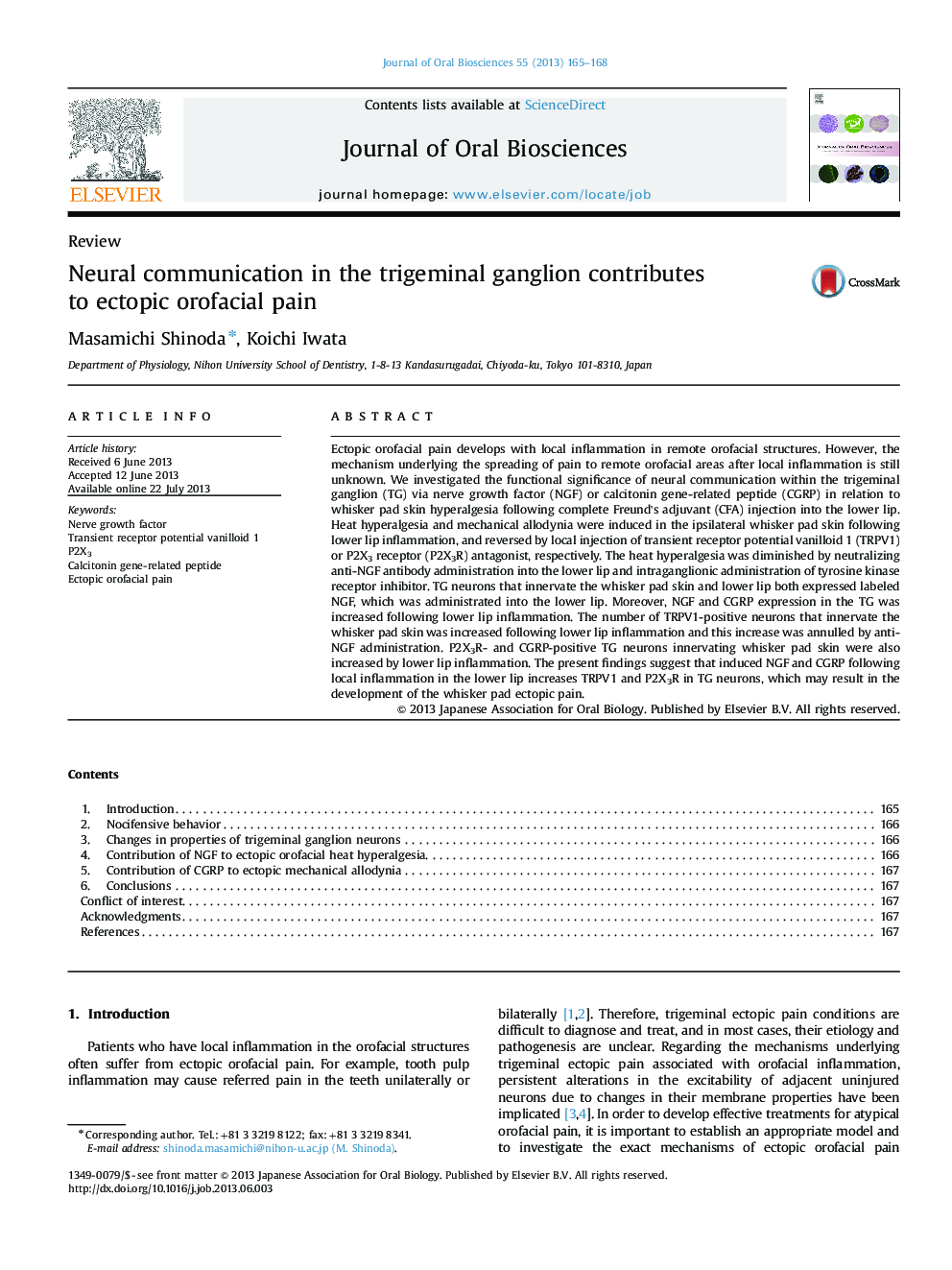| Article ID | Journal | Published Year | Pages | File Type |
|---|---|---|---|---|
| 2776838 | Journal of Oral Biosciences | 2013 | 4 Pages |
Ectopic orofacial pain develops with local inflammation in remote orofacial structures. However, the mechanism underlying the spreading of pain to remote orofacial areas after local inflammation is still unknown. We investigated the functional significance of neural communication within the trigeminal ganglion (TG) via nerve growth factor (NGF) or calcitonin gene-related peptide (CGRP) in relation to whisker pad skin hyperalgesia following complete Freund's adjuvant (CFA) injection into the lower lip. Heat hyperalgesia and mechanical allodynia were induced in the ipsilateral whisker pad skin following lower lip inflammation, and reversed by local injection of transient receptor potential vanilloid 1 (TRPV1) or P2X3 receptor (P2X3R) antagonist, respectively. The heat hyperalgesia was diminished by neutralizing anti-NGF antibody administration into the lower lip and intraganglionic administration of tyrosine kinase receptor inhibitor. TG neurons that innervate the whisker pad skin and lower lip both expressed labeled NGF, which was administrated into the lower lip. Moreover, NGF and CGRP expression in the TG was increased following lower lip inflammation. The number of TRPV1-positive neurons that innervate the whisker pad skin was increased following lower lip inflammation and this increase was annulled by anti-NGF administration. P2X3R- and CGRP-positive TG neurons innervating whisker pad skin were also increased by lower lip inflammation. The present findings suggest that induced NGF and CGRP following local inflammation in the lower lip increases TRPV1 and P2X3R in TG neurons, which may result in the development of the whisker pad ectopic pain.
